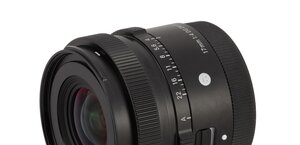Fujifilm Fujinon XF 16 mm f/1.4 R WR
3. Build quality
In the photo below the Fujinon XF 16 mm f/1.4 R WR is positioned next to another Fujinon with an aperture of f/1.4 so the 1.4/35 model.
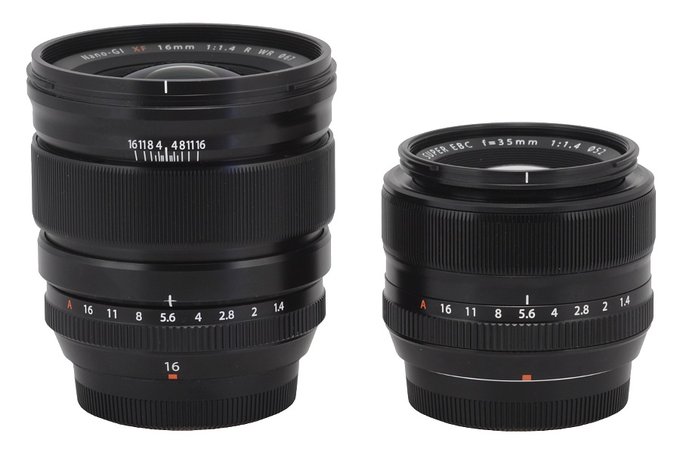 |
Please Support UsIf you enjoy our reviews and articles, and you want us to continue our work please, support our website by donating through PayPal. The funds are going to be used for paying our editorial team, renting servers, and equipping our testing studio; only that way we will be able to continue providing you interesting content for free. |
- - - - - - - - - - - - - - - - - - - - - - - - - - - - - - - - - - - - - - - - - - - - - - - -
The tested lens starts with a metal mount which surrounds contacts and an immobile rear element, 21 mm in diameter. The proper body of the lens is made of metal; it begins with a smooth ring which doesn’t move and features a red rectangle, making an alignment with a camera easier; then you see a serial number and information that the lens was produced in Japan.
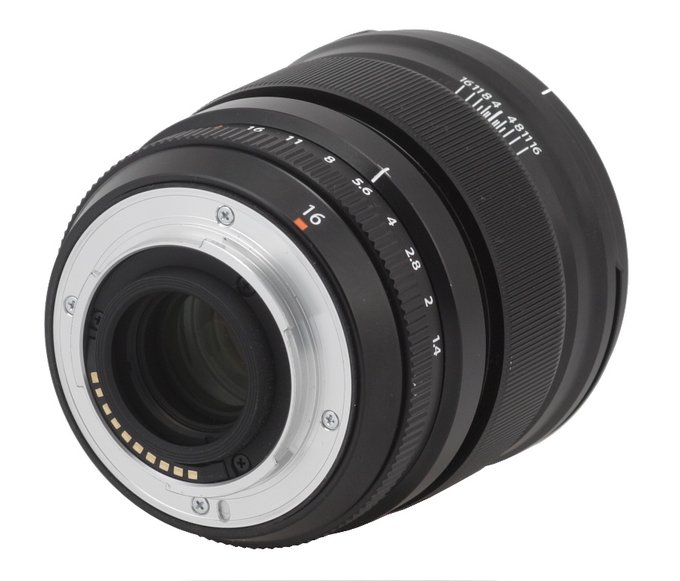 |
Another part is a ribbed aperture ring, 11 mm wide, working every 1/3 EV step.
Behind a second immobile ring belonging to the proper lens casing you see a ribbed manual focus ring. It is as wide as 19 mm and, apart from turning, you can move it also upwards and downwards. When it is pushed closer to the front element system it cannot be turned. When you move it downwards you reveal a distance scale expressed in feet and meters and the ring starts working in a normal, mechanical mode ( with the autofocus switched off). It is a joy to use as it is properly damped. Running through the whole distance scale takes a turn through an angle of about 160 degrees allowing you very precise settings.
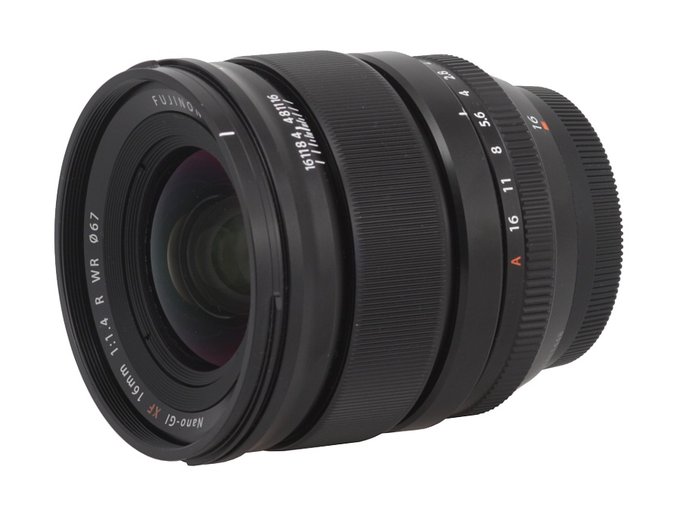 |
Personally I prefer classic, manual focus rings so the lack of servomechanisms, used in some Fujion lenses, makes me really happy. Still you have to take into account the fact that it also means lack of any distance scale (with depth of field markings) in a display. Fortunately above the distance scale you also get a classic depth of field scale, painted on the lens, with marks for almost all (apart from f/1.4) apertures offered by the tested device.
It’s worth adding that the vertical movement of the manual focus ring is very stable, without causing any shift of the scale. It is a very pleasant change, especially if compared to the performance of, for example, a similar mechanism Tokina lenses are equipped with.
Behind the depth of field scale you see a hood mount. On the inside it has a non-rotating filter thread, 67 mm in diameter. That thread surrounds an inscription with the name and the parameters of the lens. The front element doesn’t move, it is slightly convex and 40 mm in diameter.
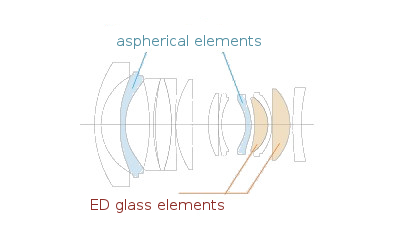 |
Buyers get both caps, a hood and a soft pouch in the box.
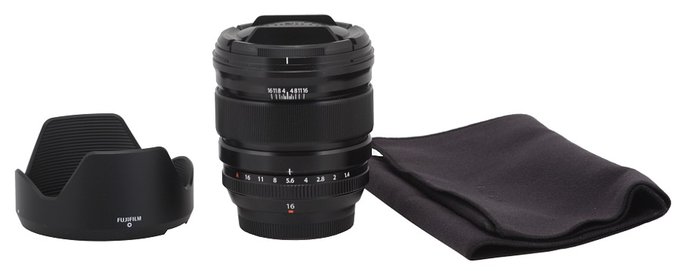 |





